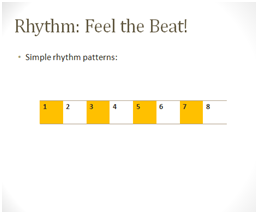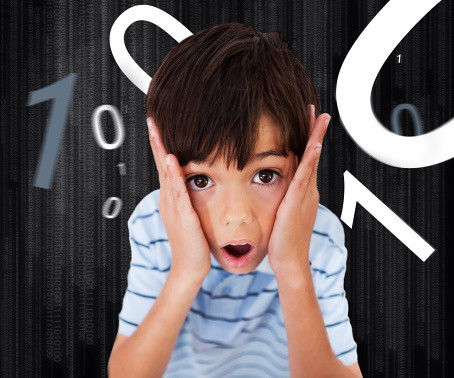Last week we had a very interesting lecture from Simon Reynolds who is the Science Learning Manager at the Dundee Science Centre. I have very fond memories of going to the Science Centre when I was younger. I loved (and still do) learning new and interesting scientific facts. I only realised in this lecture how crucial maths is to Science and in particular Astronomy.
At the beginning of the lecture we started speaking about how maths is relate to Astronomy. When Astronomers explain how many stars there are in our universe it is usually written as 1022 stars (Reynolds, 2015). This number would be written out like, 10, 000,000,000,000,000,000,000. It takes a lot more effort to write out that number and also it is more logical to write the number out as an exponent.
We also discussed how big we think particular planets are by comparing them to particular object such as marbles, beach balls, footballs etc. We also used our hands to judge how small or large we thought each planet was. This was a very physical activity and I would use this in my practice to get the pupils talking about the size, mass and weight, diameter and also the distances between planets which are fundamental components of mathematics involved within Astronomy.
Furthermore, we discussed a picture that was on the PowerPoint which is similar to the image below. Is this a realistic picture to show children? Our Solar System is huge and is filled with big empty spaces between each planet (Reynolds, 2015). Having discussions wi th children about the distances between the planets and the scale size of each planet will not only allow children to extend their knowledge of the solar system but also encourage their mathematical thinking skills.
th children about the distances between the planets and the scale size of each planet will not only allow children to extend their knowledge of the solar system but also encourage their mathematical thinking skills.
During this lecture I realised that maths is involved with everything in life in some way. I read an article by Tegmark (2013) that discussed how maths is involved in nature and we cannot escape it. It is apparent that within nature maths is also nearly always involved, such as the shape of a pebble and when it is thrown how it naturally glides through the air or “its trajectory” Tegmark (2013). This could apply to the Earth being round, “…millions, and even trillions of tonnes of mass, the effect of the gravity really builds up.” (Cain, 2009). This is why the Earth has the shape of a sphere as nature creates this shape. This happens when size and mass are increased then the strength of gravity can create the shape of a sphere (Cain, 2009). While Cain (2009) describes the earth to be round, there is in fact research to suggest that the earth is an oval. Choi (2007) states that Isaac Newton suggested that the Earth was in fact not exactly round. It has been found that because mass is not evenly distributed and this is why the Earth has not got an exact spherical shape.
There are also other aspects such as equations that astronomers have to solve daily with extremely large numbers. The equations that are involved should not be looked at as just numbers but what do these represent in the real world (Tiede, 2007, P21). Using equations can turn “a puzzle into a routine exercise” (Mason, Burton and Stacy, 1982, P.196). This suggests that equations can become easier over time as it becomes more like a daily activity.
I found this lecture very enjoyable and I am now aware that maths is used in Astronomy regularly through using equations, calculating mass, distances between planets etc. It is clear that maths is fundamental to Astronomers and without it they would not be able to experiment and find out crucial data needed to explore our universe. I will continue to develop my knowledge of the Solar System as I think this will be beneficial to me when I go on placement. I also intend to show the relevance of maths and Astronomy to my pupils as I now believe it is important to highlight this.
References
Cain, F. (2009) Why is the Earth Round?. Available at: http://www.universetoday.com/26782/why-is-the-earth-round/ (Accessed: 21 November 2015).
Choi, C, G. (2007) Strange but True: The Earth is not Round. Available at: http://www.scientificamerican.com/article/earth-is-not-round/ (Accessed: 28 November 2015).
Tegmark, M. (2013) Everything in the Universe Is Made of math – including you. Available at: http://discovermagazine.com/2013/dec/13-math-made-flesh (Accessed: 21 November 2015).
Reynolds, S. (2015) ‘Maths in Astronomy’ [PowerPoint presentation]ED21006:Discovering Mathematics. Available at: https://my.dundee.ac.uk/bbcswebdav/pid-4535880-dt-content-rid-2953578_2/courses/ED21006_SEM0000_1516/Simon%20Reynolds%20Maths%20and%20astronomy%20presentaion.pdf (Accessed: 19 November 2015).
Tiede, G. (2007) Basic Mathematics for Astronomy. Available at: http://physics.bgsu.edu/~tiede/class/bmastronomy1.2.pdf (Accessed: 21 November 2015).

 The picture shown below is what we used, the yellow boxes told the class when to clap and the white boxes were to indicate a rest. Anna split us into groups and allowed each group to perform a particular clapping sequence. We then added them all together so that the rhythm over lapped one another.
The picture shown below is what we used, the yellow boxes told the class when to clap and the white boxes were to indicate a rest. Anna split us into groups and allowed each group to perform a particular clapping sequence. We then added them all together so that the rhythm over lapped one another.
